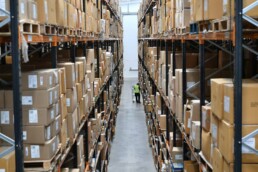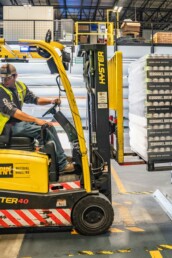Advanced E-commerce Overstock Prevention Strategies
Optimizing Inventory: Advanced E-commerce Overstock Prevention Strategies
In e-commerce, mastering inventory management is king and is essential for sustained success. This comprehensive guide meticulously explores the complexities of preventing overstock. It delves into unraveling its root causes, understanding downsides, and introducing advanced strategies for prevention. Join us on this enlightening journey as we delve into Falcon Fulfillment’s innovative solutions, meticulously designed to revolutionize your approach to inventory management and optimize your business for unparalleled success.
Understanding Overstocking in E-commerce
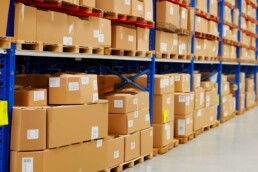
Overstocking in e-commerce occurs when businesses accumulate surplus inventory beyond what they can effectively sell. This excess can lead to increased storage costs, reduced working capital, and potential losses from expired or obsolete goods. E-commerce overstock prevention strategies help when striking the right balance between having enough stock to meet demand and avoiding overstocking is crucial for sustained profitability.
There are several key reasons why overstocking tends to occur in e-commerce. Forecasting errors is a big one – if sales projections are too optimistic, companies will order or produce more inventory than they actually end up needing. Also, sudden changes in consumer demand or buying trends can catch businesses off-guard, leaving them overstocked with products that end up not selling well. Out-of-date data analytics that fail to capture seasonality, product cycles, and market dynamics can likewise contribute to distorted visibility and excess inventory building up across the supply chain over time.
The financial impacts of overstocking can be significant for e-commerce businesses. Excess inventory ties up substantial working capital in products that face diminishing value as they remain unsold. Continued warehousing and storage costs accumulate as well, shrinking profit margins with little revenue to show for it. For products with short lifecycles like electronics and apparel, old overstock faces rapid obsolescence in a matter of months. Overstocked perishable goods or fragile items also face expiration well before reaching customers. Plus, the opportunity cost of capital locked into stagnant stocks could otherwise be invested into more productive business expansion and growth initiatives.
Navigating the Downsides of Overstock
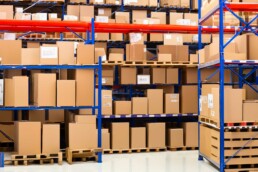
The repercussions of overstocking extend beyond financial impact. Increased storage costs, tied-up working capital, and potential loss of products with expiration dates contribute to a cascade of challenges. Furthermore, overstocking can lead to diminished cash flow over time as inventory sits unsold. Likewise, it limits a business’s agility to respond to shifts in consumer demand. Additionally, warehousing excess stock drives up operational costs. In the same way, short-lived goods like electronics or fashion items face rapid obsolescence when overstocked, creating impairment charges. Navigating this terrain successfully requires businesses to be vigilant in their inventory management practices. Specifically, they need real-time visibility into sales velocities and inventory positions across distribution centers. Similarly, accurate demand forecasting and production planning helps align stock levels with consumer needs. Through proactive monitoring and data analysis, companies can avoid the pitfalls of overstocking.
Defining the Threshold of “Too Much” Stock
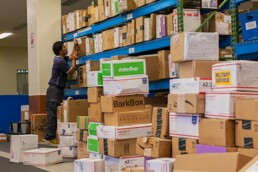
Determining the optimal inventory levels for your business requires a nuanced approach. Firstly, by monitoring the inventory turnover rate at the SKU level, businesses gain a key indicator. Moreover, a low turnover rate signals overstocking, prompting the need for SKU rationalization to discontinue slow-moving items. Delve into the nuances of what constitutes “too much” stock, and explore how businesses can find their optimal balance.
Identifying the Root Causes of Overstocking
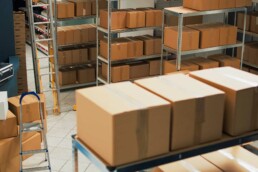
Five prominent reasons drive businesses to overstock inventory. Fear of stockouts, improper inventory management, seasonal demands, lack of demand forecasting, and overcompensating for supply chain issues each contribute to this challenge. Understanding these root causes is crucial to formulating effective prevention strategies.
Preventing Overstocking with Falcon Fulfillment: A Holistic Approach

Falcon Fulfillment’s e-commerce overstock prevention strategies offer a holistic approach to eliminating overstocking challenges. Through efficient fulfillment services and tech-enabled features, Falcon Fulfillment provides real-time visibility into inventory movement, advanced SKU tracking, and demand forecasting capabilities.
Proactive Demand Forecasting: Falcon Fulfillment’s software analyzes historical sales data and current inventory performance at the SKU level, enabling businesses to forecast future demand accurately. This proactive approach prevents both overstocking and understocking.
Real-time Inventory Insights: Gain access to real-time inventory tracking with Falcon Fulfillment, a crucial tool that empowers businesses to make informed decisions about reordering. This feature plays a pivotal role in ensuring that inventory levels align precisely with actual demand, thereby preventing unnecessary accumulation and optimizing operational efficiency.
Precision in Inventory Level Calculation: Falcon Fulfillment’s detailed reports on inventory costs and performance facilitate the calculation of safety stock availability and optimal inventory levels. This precision allows businesses to maintain a balanced inventory while considering production lead times.
Strategic Inventory Distribution: Leveraging a distributed network of fulfillment centers, Falcon Fulfillment enables businesses to store inventory strategically. This approach improves order fulfillment turnaround time, potentially increasing sales. The software aids in calculating optimal inventory distribution across different locations, mitigating the risk of overstocking.
Beginner’s Guide to Third-Party Logistics (3PL)
The world of e-commerce is always changing, therefore understanding the roll of Third-Party Logistics is integral to keeping up. In light of this our beginner’s guide to third-party logistics (3PL) will delve into the essential aspects, offering insights into fulfillment services, warehousing, and much more.
Read More…
Effective inventory management serves as the cornerstone of successful e-commerce operations. Moreover, Falcon Fulfillment’s advanced solutions not only empower businesses to streamline their approach but also enhance efficiency, ensuring a seamless customer experience. Through adopting these strategies, businesses can effectively strike the delicate balance between meeting customer demand and maximizing profitability.
Embrace the future of inventory management with Falcon Fulfillment and ensure your business stays ahead in the competitive world of e-commerce.
Let’s Talk!
7 Necessary E-commerce Integrations When Getting Started
7 necessary e-commerce integrations when getting started
There are many things to consider when setting up your online store. There are a few basic integrations that every e-commerce business needs. Here are 7 necessary e-commerce integrations when getting started.
Website Builder

Your website is your storefront. Furthermore, utilizing a website builder integration allows you to create a professional-looking website without hiring a custom developer and designer. Additionally, many website builders come with various applications, features, and integrations that help streamline sales and fulfillment. For example, some of e-commerce’s most popular website builders include Shopify, BigCommerce, Square, and Wix. Specifically, Shopify offers an easy-to-use platform with lots of built-in features for managing an online store. Likewise, BigCommerce provides powerful tools for creating an online presence and selling products. Ultimately, choosing the right website builder depends on your business’s specific needs and budget. But in general, these services make it simple to get an e-commerce store up and running quickly.
Payment Gateway

Making sales online requires a way to receive and refund money. Your payment gateway is a necessary e-commerce integration when getting started. There are many to choose from, and your website builder probably has a few preferred payment gateway options. To decide on which payment gateway integration is right for you, consider the following:
- What payment methods do you need
- Best ways to accept money
- Available payment options (the more, the merrier)
- Integrations available for your website
- Customer data security
- Cost-effectiveness
- How chargebacks are handled
- Customer support resources
Accounting Software

Every e-commerce CEO loves counting their cash from sales but loathes crunching numbers, especially when taxes get involved. You should consider accounting software a vital e-commerce integration when you start. Things to consider when you select an accounting solution are the number of users, regular updates (to stay current with best practices), an easy-to-use format, and getting started training, as well as automated billing, payments, and cash forecasting. Ensure your software can either provide your accountant with essential reporting or your accountant or their team can easily access it. Lastly, your accounting software must integrate easily with your e-commerce platform and payment processing systems.
Customer Support Software

When you start selling online, you must deal with unhappy or confused consumers. A robust customer support system will ensure customers get help and support immediately. Here are some of the best customer support software implementations in 2022, according to Snov.io.
- Hubspot
- Zendesk
- Gorgias
- Help Scout
- LiveAgent
Inventory Management

If you have a product, you need a way to manage your inventory. Inventory management systems integrate seamlessly with your sales systems. Ensuring your stock is updated-to-date, accurate, and tracked in real-time will prevent stockouts, missed sales opportunities, and optimal ordering. A fulfillment service provider typically offers this type of software integration. Make sure they can integrate with your POS systems or they are willing to build custom APIs.
Shipping and Fulfillment Software

Customers want to know where their orders are at all times. The “Amazon Prime Effect” has led to consumers expecting orders delivered in 2-days or less. This isn’t always possible but keeping a consumer informed when their package will be delivered minimizes frustration when things take a bit longer. You can only offer this “satisfaction” boosting information if you have detailed, real-time shipping and fulfillment integrations. Your carrier can offer some level of insight, and if you work with a white-glove fulfillment team, they can provide this detail, and many will have a system that can notify customers on your behalf.
Beginner’s Guide to Third-Party Logistics (3PL)
The world of e-commerce is always changing, therefore understanding the roll of Third-Party Logistics is integral to keeping up. In light of this our beginner’s guide to third-party logistics (3PL) will delve into the essential aspects, offering insights into fulfillment services, warehousing, and much more.
Read More…
The world of e-commerce is moving toward a full-service omnichannel experience. Ensure that you have the best chance for success by implementing a few of 7 the necessary e-commerce integrations when getting started. While setting up these integrations can feel overwhelming, many website builders offer pre-built integrations. Furthermore, when you partner with a 3PL like Falcon Fulfillment, they can offer top-of-the-line proprietary software to their clients that streamline order fulfillment, including returns and exchanges. That means you can focus on what matters most in your business.
If you want to learn more about the technologies and integrations, Falcon offers, get in touch with one of our agents today.
Let’s Talk!
US Shoppers Confront China Package Fees Crisis
US Shoppers Brace For China Package Fees
US shoppers are increasingly facing unexpected challenges when ordering products from overseas, particularly from China. Rising import costs and new regulatory measures have introduced what many refer to as “China Package Fees.” These additional charges are affecting consumer spending and disrupting international shipping and fulfillment processes. As businesses scramble to adapt, the entire logistics ecosystem undergoes significant changes. In this blog, we explore the origins of these fees, analyze their far-reaching implications, and examine how supply chain management experts respond. We also review trends in order fulfillment solutions, e-commerce fulfillment, and advanced inventory management techniques essential in today’s competitive market.
Rise of China Package Fees and Their Impact on Consumers

Understanding the New Fee Structure
Over recent months, policy changes and tariff adjustments have led to significant charges on packages from China. Firstly, third-party logistics (3PL) providers updated their processes to meet stricter customs regulations and enhanced customs brokerage practices. Furthermore, fulfillment services have experienced increased processing fees, while warehousing and distribution centers reassess cost structures. Consequently, order fulfillment solutions face pressure as e-commerce fulfillment operations struggle with profitability. In addition, inventory management and shipping and delivery systems are being revamped to meet updated standards. Businesses must now navigate complex supply chain management challenges, including last-mile delivery, cross-docking, and freight forwarding procedures. Ultimately, the traditional model of international shipping is evolving under the weight of escalating China Package Fees—truly transformative.
Real-Life Implications for Shoppers

American consumers have felt the impact of these fees firsthand. Many shoppers report that additional charges sometimes exceed the cost of the items they purchase. Moreover, small businesses relying on vendor-managed inventory (VMI) and dropshipping solutions face increased financial strain. Unexpected fees often result in order cancellations or returns, which complicate reverse logistics and disrupt order tracking and management systems. Consequently, companies are investing in same-day and next-day delivery options to mitigate delays, while exploring freight consolidation and value-added services (VAS) to reduce expenses. As a result, both consumers and businesses are rethinking their approaches to international shipping and import/export. This shift has made the challenge of China Package Fees more acute and unavoidable. These rising fees continue to pressure market strategies and consumer confidence, undeniably challenging for all parties.
Challenges in Global Shipping and Fulfillment
Complexities in Supply Chain Management
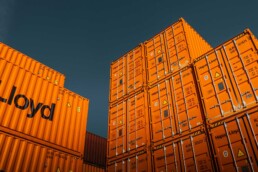
Today’s international shipping landscape is marked by increased complexity and rising costs. Businesses confront challenges managing both outbound and inbound logistics, especially with the burden of China Package Fees. Moreover, companies are adopting advanced inventory tracking software and implementing safety and security measures in warehousing to mitigate risks. Additionally, robust 3PL technology solutions along with strategic carrier selection and management practices are streamlining operations. Packaging optimization and freight rate negotiation have become essential for lowering expenses. Furthermore, freight audit and payment services are under review to ensure shipments meet strict order fulfillment metrics and reporting standards. Overall, supply chain optimization has evolved into a critical necessity. Organizations must also consider bulk shipping and comply with international shipping and import/export regulations to stay competitive, ensuring sustained growth in a volatile market.
The Role of Fulfillment and Inventory Management
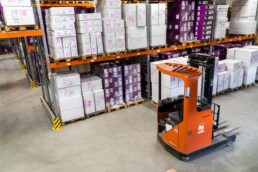
As global logistics challenges intensify, efficient fulfillment and inventory management have become indispensable. Retailers are increasingly investing in e-commerce integration services and cloud-based warehouse management systems (WMS) to maintain high order accuracy and quality control. Furthermore, innovations such as shipment consolidation, demand planning, and streamlined outbound and inbound logistics are prioritized to meet evolving customer expectations. Advanced order splitting and routing, along with return merchandise authorization (RMA) processing, are critical for ensuring on-time delivery. In addition, scalable fulfillment solutions and regular inventory cycle counts help streamline operations.
Notably, businesses that integrate same-day and next-day delivery systems with comprehensive order tracking and management can better address the rising costs imposed by China Package Fees. Consequently, incorporating fulfillment cost analysis and FBA strategies is essential for sustainable growth in a challenging economic environment. This proactive approach drives remarkable efficiency and long-term profitability.
The surge in China Package Fees has disrupted traditional international shipping. It is essential for consumers and businesses to adopt innovative strategies and embrace modern technologies. Focusing on supply chain optimization, enhanced order fulfillment solutions, and robust inventory management can mitigate these extra costs. Leveraging advanced logistics tools and systems is critical in adjusting to an evolving market. Ultimately, proactive adaptation secures a future competitive advantage and sustained growth, ensuring long-term, consistent success in today’s extremely volatile economy.
As we move forward, it is evident that the global marketplace remains in constant flux. US shoppers and businesses must remain agile, adopting advanced logistics strategies such as reverse logistics, freight forwarding, and cross-docking alongside conventional shipping methods. The persistent rise of China Package Fees is driving industry-wide transformation. Through continuous adaptation and strategic investment in cutting-edge technology, organizations can turn these challenges into opportunities for efficiency and profitability, ultimately securing a competitive edge.
Beginner’s Guide to Third-Party Logistics (3PL)
The world of e-commerce is always changing, therefore understanding the roll of Third-Party Logistics is integral to keeping up. In light of this our beginner’s guide to third-party logistics (3PL) will delve into the essential aspects, offering insights into fulfillment services, warehousing, and much more.
Read More…
By embracing these transformative changes, companies not only protect profit margins but also enhance customer satisfaction. It is vital to prioritize comprehensive order tracking and management, scalable fulfillment solutions, and precise inventory forecasting while investing in warehouse automation and strategic carrier selection and management. Addressing the challenges of China Package Fees through such innovative measures paves the way for a more efficient, profitable, and resilient global supply chain. Unified efforts will ensure long-term success in international trade with certainty.
If you want to get more information about shipping charges, get in touch with one of our team today.
Let’s Talk!
5 Strategies for Eco-friendly Fulfillment
5 Strategies for Eco-friendly Fulfillment
As the e-commerce industry continues to expand, so have consumer concerns around environmental impact. E-commerce waste is becoming a serious problem. In 2018, the EPA estimated that packaging accounts for about 30% of all household waste. Increased social awareness has magnified the importance of minimizing our carbon footprint. Today, nearly 90% of Gen X consumers said they would be willing to spend an extra 10% or more for sustainable products or services, compared to just over 34% two years ago. Brands that reduce their carbon footprint have a unique advantage in the marketplace. You can build strategies for eco-friendly fulfillment even if you don’t sell “eco-friendly” products. Every decision made toward a more sustainable future benefits us all.
Sustainable Packaging
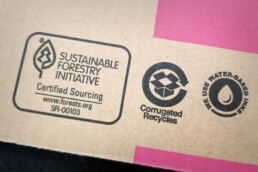
Sustainable packaging is packaging that produces the least amount of pollution regarding manufacturing, production, and disposal. Making a switch to more eco-friendly packaging instantly reduces environmental impact. The myriad of biodegradable, recycled, and compostable packaging options can be dizzying to select the best choice for your brand. Download our “Sustainable Packaging Guide” for more detailed insight on determining what is suitable for your company.
There are three main types of eco-friendly fulfillment packaging.
- Compostable packaging – made from renewable plant-based materials and or biopolymers and must break down within 90-180 days in commercial composting conditions.
- Reusable packaging – can be used multiple times and intertwines with sustainable packaging design.
- Recycled packaging – typically sourced from plastics that have been reprocessed at a recycling facility and given a second life.
Optimized Transportation

Another area to boost eco-friendly fulfillment is optimizing transportation, as it contributes significantly to growing greenhouse gas emissions. Ways to streamline transportation include reducing trips, ensuring a high fill rate on shipments, and utilizing local distribution centers. A 3PL partner can provide strategic transportation solutions to build a sustainable e-commerce business. They can boost the fill rate per transport vehicle, which reduces overall gasoline consumption and CO2 emissions. Furthermore, a 3PL can eliminate stages of the transportation journey by leveraging multi-site distributions and optimized route planning.
Streamlined Inventory Management
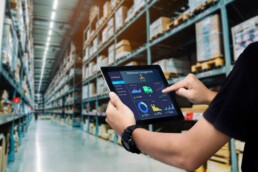
While streamlining inventory management might not be an obvious strategy for eco-friendly fulfillment, errors can be costly in time and resources and create inefficiencies. Every improperly labeled, categorized, or shipped product must be returned, restocked, or discarded. Therefore, ensuring your fulfillment team has a streamlined inventory management system will reduce errors, time inefficiencies, and returns or exchanges. Consequently, a fulfillment team that implements the following inventory management protocols will be more effective and, as a result, more eco-friendly.
- Automated processes
- Single SKU (QR coding/barcoding etc.)
- Accurate and real-time reporting
- Integrated technology
- Open communication within supply chain partners
Developing an inventory management process that incorporates as much automation and digitization as possible helps reduce human error, but it isn’t 100% necessary. Businesses managing inventory manually can still be eco-friendly if they create processes that are mindful of reducing waste and include checks and balances to ensure accuracy.
Domestic or Localized Supply Chain

A hyper-local supply chain is a way to create a more eco-friendly fulfillment strategy. If the raw goods you sell can be sourced from suppliers closer to your customer base, it reduces your carbon footprint. It takes a lot of energy and money to ship goods from overseas. Furthermore, issues with supply chain delays and gridlocks are mitigated more easily with domestic vendors.
Eco-friendly Fulfillment Partner

Certainly, enhancing your company’s eco-friendly score is crucial. Therefore, opting for an environmentally-minded fulfillment partner becomes a significant decision. To achieve this, consider partnering with a 3PL that has established processes promoting sustainability. Falcon Fulfillment, in particular, provides optimized transportation, various sustainable packaging options, multi-site distribution, and automated inventory management. This strategic move can contribute significantly to your overall eco-friendly initiatives.
Beginner’s Guide to Third-Party Logistics (3PL)
The world of e-commerce is always changing, therefore understanding the roll of Third-Party Logistics is integral to keeping up. In light of this our beginner’s guide to third-party logistics (3PL) will delve into the essential aspects, offering insights into fulfillment services, warehousing, and much more.
Read More…
Consumers are willing to pay a little bit more to know that their purchase is going to a company committed to sustainability. Implementing strategies for eco-friendly fulfillment is a process. Start by choosing a few ways to create a sustainable business, like swapping traditional packaging materials for sustainable options. As your business grows, your sustainability strategy can as well.
If you want to learn more about eco-friendly fulfillment, get in touch with one of our agents today.
Let’s Talk!
How to Improve Order Fulfillment to Maximize Customer Satisfaction
How to Improve Order Fulfillment to Maximize Customer Satisfaction
In today’s competitive business environment, companies must prioritize delivering the best customer experience. To achieve customer satisfaction with their orders, it is crucial to maintain efficiency and reliability in the order fulfillment process. In this blog post, we’ll explore strategies aimed at enhancing order fulfillment and optimizing customer satisfaction. Specifically, we’ll delve into streamlining the process, minimizing errors, enhancing accuracy, and fostering improved communication between customers and the company. Implementing these order fulfillment tips empowers companies to offer customers a superior ordering experience, ultimately resulting in heightened satisfaction.

1. Improve Order Accuracy
Maintaining customer trust and loyalty hinges on precise order fulfillment. Errors during order processing not only lead to dissatisfied customers but also result in lost sales and damaged reputations. Therefore, ensuring high order accuracy stands as a pivotal component of any successful fulfillment process, guaranteeing customers receive the correct items punctually.
To enhance order accuracy, several crucial elements should be considered. These include utilizing a dependable inventory tracking system, establishing a comprehensive system of quality assurance checks, and integrating automation where feasible. Moreover, employees should undergo training emphasizing accuracy and attention to detail in order fulfillment.
In addition, implementing a double-check process for each order and batch of orders can significantly reduce errors. Lastly, the automation of specific processes, such as labeling and packaging, serves to diminish the likelihood of human error. By adopting these measures, order accuracy within the fulfillment process can be substantially elevated.
2. Inventory Accuracy
Inventory accuracy is vital to efficient order fulfillment. Accurate inventory gives businesses the information they need to plan ahead, anticipate customer needs and order adequate products to meet demand. With an accurate inventory, it is easier to ensure that orders will be shipped promptly. Inaccurate inventory counts lead to stockouts, delayed deliveries, and unhappy customers. Additionally, accurate inventory reduces the time spent searching for stock and the costs associated with mistakes and returns. Overall, inventory accuracy is necessary for successful order fulfillment and customer satisfaction. Three common ways to improve inventory accuracy include:
- Use single SKU systems along with barcode technology.
- Schedule regular cycle counts to reconcile system counts against physical counts.
- Train staff on how to receive, store, and restock inventory to ensure quality control and improved accuracy.
3. Lower Rates of Return
Lowering the rate of return for an e-commerce business can be difficult, but it is important if companies want to remain competitive in the modern marketplace. According to the National Retail Federation, rates of returns have stayed consistent over the past year, hovering between 16-17%. Nearly 20% of all products sold online are returned, which significantly reduces profitability. The reality is that customers will not return an item they are fully satisfied with. Therefore, to lower your rates of return, ensure that all products are of the highest quality and that customer service is timely and professional.
Provide detailed specifications and size charts. Furthermore, make sure that all products are accurately described and photographed on the website. This can help customers make informed decisions, thus reducing returns due to dissatisfaction.

4. Faster Delivery Speed
Improving delivery speed for an e-commerce business is key to maximizing customer satisfaction. To achieve faster delivery speeds, businesses should prioritize shipping carriers that offer expedited delivery times, such as priority or next-day options. Additionally, businesses can implement a streamlined warehouse process to ensure orders are prepared quickly and efficiently. Furthermore, investing in technology that allows customers to track their orders in real time can be beneficial in providing a seamless customer experience. Finally, businesses should consider offering various shipping options, such as same-day delivery and BOPIS (Buy Online Pickup In-Store), to meet customer needs. With the right strategy, businesses can improve delivery speed and boost customer satisfaction.
5. Better Order Tracking and Communication
Faster delivery times not only enhance customer satisfaction but so does transparent tracking and communication regarding package arrival. The crucial elements in achieving this are transparency and accuracy. Customers seek information on when they can expect their delivery. When a company pledges next-day delivery but falls short, delivering the package the following week, it results in customer frustration. In this aspect, companies are wise to set conservative expectations and exceed them.
To achieve this, employ advanced tracking and delivery technologies that seamlessly integrate with carriers, providing customers with real-time updates on the anticipated receipt of their purchases. Clear and proactive order communication is an investment that pays dividends, fostering trust and reliability with customers.
6. Improved Warehouse Efficiencies
The warehouse is the most oft-forgotten element in maximizing customer satisfaction. Orders are fulfilled: merchandise is picked for individual shipments, packed to ensure against breakage, and shipped according to the customer’s instructions. A mismanaged, unorganized, or chaotic warehouse can lead to slower delivery times, damaged products, inaccuracies, and more frustrating issues. Implementing these ideas can improve warehouse efficiency and boost consumer contentment.
- Maintain a flexible layout and workflow. This allows staff and space to be multi-use when orders change.
- Utilize the entire space. In other words, use the vertical and horizontal space well.
- Be tidy and avoid congestion. Cluttered aisles aren’t just an eye sore; they also are a hazard and significantly slow down order fulfillment.
- Schedule teams wisely. For example, have pickers start their workday earliest, followed by packers, followed by the replenishment teams.
- Audit performance regularly; this includes order accuracy, order turnaround time, and cost of labor, etc.
7. Personalization (Unboxing/Branded Packaging)
Another brilliant way to improve order fulfillment and maximize customer satisfaction is through personalization. By personalizing the customer experience with customized packaging, customers feel they are receiving a unique, one-of-a-kind product. Branded unboxing also helps create a memorable customer experience, allowing brands to showcase their identity and values within the packaging. These personalized touches make a connection between the customer and the brand, leading to increased customer loyalty and higher satisfaction. Moreover, it has been found that customers are more likely to share their unboxing experience on social media, thus increasing brand visibility and sales.
Beginner’s Guide to Third-Party Logistics (3PL)
The world of e-commerce is always changing, therefore understanding the roll of Third-Party Logistics is integral to keeping up. In light of this our beginner’s guide to third-party logistics (3PL) will delve into the essential aspects, offering insights into fulfillment services, warehousing, and much more.
Read More…
Working with a trusted 3PL can improve order fulfillment and maximize customer satisfaction.
Working with a 3PL for order fulfillment can dramatically improve customer satisfaction. 3PLs, or third-party logistics providers, consist of professionally trained experts in order fulfillment. These experts ensure the accurate and prompt fulfillment and shipment of orders, reducing delays and errors and guaranteeing timely delivery to customers.Additionally, most 3PLs can improve shipping costs and have detailed tracking systems to ensure accurate delivery windows. Furthermore, 3PLs can offer various services, such as custom packaging, returns management, and value-added services, that can help create an even more seamless customer experience. With a 3PL, customers can be sure that their orders are taken care of and arrive on time, leading to improved satisfaction and loyalty.
Improving order fulfillment isn’t easy, but maximizing customer satisfaction is worth the effort. Order fulfillment has become a way to differentiate your business. While your customers may not notice your hard efforts, they will notice when something goes awry.
To see how partnering with Falcon Fulfillment can improve your order fulfillment get in touch with one of our friendly agents today.
Let’s Talk!
The Pros and Cons of Outsourcing Your Beer and Wine Fulfillment
The Pros and Cons of Outsourcing Your Beer and Wine Fulfillment
The craft beer and wine industries have seen significant growth in the last few years. In fact, craft beer alone has grown to an almost $300 billion global industry. Craft brewers, by definition, must produce less than six million barrels of beer; therefore, many lack the resources to distribute their beer outside a local region. As a result, more businesses have been outsourcing their beer and wine fulfillment needs. While this approach can greatly reduce costs and streamline processes, it also comes with risks and challenges. To help you decide if outsourcing is the right choice for your business, here is a look at the pros and cons of outsourcing your beer and wine fulfillment.
Pros: Outsourcing Your Beer and Wine Fulfillment

1. Cost Savings
The most obvious benefit of outsourcing beer and wine fulfillment is that it can help you save money. By outsourcing, you won’t have to pay for all the overhead costs associated with hiring, training, and managing staff. You’ll also be able to save on the cost of purchasing and maintaining the necessary equipment.
2. Increase Efficiency
Outsourcing your beer and wine fulfillment can also help you increase efficiency. It removes the need for a business to manage its own staff and maintain the infrastructure needed for beer and wine fulfillment. Professional fulfillment companies have the experience and resources to quickly and accurately distribute orders, allowing you to focus on the core competencies of your business.
3. Expertise
When you outsource your beer and wine fulfillment, you gain access to a team of experts. Professional fulfillment companies understand the industry’s complexities and can provide valuable insights and advice that you may not have access to otherwise. Not only can they streamline transportation and distribution, but they can also help your company expand into new markets effectively.
4. Compliance
Beer and wine production and distribution are monitored by different regulatory bodies. The larger the operation, the greater the risk of serious non-compliance issues, particularly in the United States. Production, storage, and transport must all observe regulations, production processes, workplace safety, and environmental impact. Not only that, but even the definitions of what qualifies as “beer” are in flux. Compliance and regulatory issues concerning local and global laws concerning alcohol transport are reason enough to outsource fulfillment.
Cons: Outsourcing Your Beer and Wine Fulfillment

1. Loss of Control
While outsourcing can greatly reduce costs and increase efficiency, it can also lead to a loss of control. When you outsource, you rely on another company to handle vital aspects of your business. This can lead to delays, errors, and other issues that can negatively impact your business.
2. Quality Issues
Another downside of outsourcing is that you can’t always guarantee the quality of your products. A small producer with a hyper-local customer base can ensure their craft brews meet the expected taste and quality standards. As sales and customer demand increase, outsourcing fulfillment becomes a viable option, but some 3PLs may not have the same standards as your own business. This can lead to quality control issues and dissatisfied consumers.
3. Unpredictable Costs
Finally, it’s essential to remember that outsourcing can lead to unpredictable costs. Depending on your fulfillment partner, you may be subject to unexpected fees or charges that can quickly add up. This is especially true if your fulfillment teams have confusing specialty fees.
The Impact of Shipping and Delivery on E-commerce Satisfaction
In the evolving world of e-commerce, customer satisfaction hinges not only on product quality and price but also on the efficiency and reliability of shipping and delivery services. Understanding the significance of these factors is crucial in enticing potential e-commerce leads. In this blog, we delve into the key takeaways from a recent survey regarding shipping and delivery experiences, and how these findings can shape your approach to enticing e-commerce businesses.
Outsourcing with Falcon Fulfillment
We have been in the business of delivering beer and wine for years. We offer same-day processing and shipping, and we can offer higher margins than wholesale and retail. Lastly, fast transport from your brewery or vineyard via temperature-controlled FTL to our large KY distribution center. These are just a few benefits of outsourcing your beer and wine fulfillment with Falcon.
Ultimately, the decision to outsource your beer and wine fulfillment is a personal one. It can be a great way to reduce costs and increase efficiency, but it comes with its own risks and challenges. Before deciding, it’s important to weigh the pros and cons and decide if outsourcing is the right choice for your business. Get in touch today to find out more about outsourcing your beer and wine fulfillment with Falcon.
If you’re ready to start shipping your beer and wine with the professionals, contact us to learn more about our services.
Let’s Talk!
Dealing with E-commerce Inflation
Dealing with E-commerce Inflation
Prices are going up on almost everything. This pattern began during the COVID-19 pandemic and has continued without many indications that the tides will turn soon. According to the Adobe Digital Economy Index, e-commerce prices as of July 2021 were up 3.1% year-over-year. Before this, e-commerce consumers enjoyed a deflationary environment, with prices declining at 3.9% YoY. E-commerce retailers have to pivot their strategies, pricing, and fulfillment to help minimize the impacts of inflation; as consumers’ discretionary spending dries up, the competition for the remaining dollars increases. Dealing strategically with e-commerce inflation is necessary to ensure survival.
What is causing e-commerce inflation?
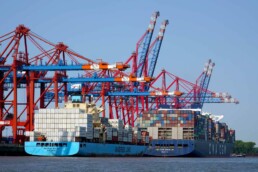
The COVID-19 pandemic triggered an imbalance in supply and demand. As consumers were quarantined and unable to spend money on experiences, they turned to physical products online. Demand for gym equipment, entertainment centers, and furniture soared as people were stuck at home—this overburdened suppliers.
The pandemic caused a massive shortage in the number of shipping containers. This was caused by the increased demand for goods and the lack of port staff, ships, and containers to transport products. Sea freight continues to cost more than pre-pandemic prices.
Lastly, Chinese suppliers are still struggling to meet production demand. Lockdowns and restrictive policies have led to significant delays in getting raw materials and manufactured goods out of the country. Many savvy e-commerce brands have diversified their supply chain by partnering with more local vendors. However, China is still the world’s largest manufacturing producer, responsible for just over 28% of the global output.
Effects of Inflation

An inflationary period is marked by an increase in the cost of goods and services that decreases the purchasing power of consumers and companies alike. In other words, a dollar doesn’t get you what it did yesterday. What specific price increases and reductions in spending are we experiencing?
Price Increases
- Increased cost of raw goods and materials
- Increased labor costs
- Increased shipping costs
Consumer Spending Changes
- Overall spending reduction
- Drop in discretionary spending
- Shift to generic brands
- 75% of consumers are spending less due to inflation
- The top three industries experiencing a drop in sales – Women’s apparel, Men’s apparel, and Electronics
- Increase in recommerce
Solutions to Deal with E-commerce Inflation

Raise prices
As prices rise for goods, services, labor, and shipping, one of the quickest and most obvious solutions is to pass the price increases to customers. It is vital to decide how and when to implement a price increase strategically. Consumers are not heartless, and most expect a fair price for their product and a reasonable profit for the seller. If you must increase your prices to maintain profitability, make sure you:
- Communicate openly and honestly – let them know why your pricing needs to increase.
- Determine fair pricing by researching competitors and checking for underpricing in existing price models
- Cut costs where possible.
- Consider offering a smaller amount for the same price. Some customers would rather have fewer products than have to pay more.
Keep a safety stock
Avoid stockouts and extended supply chain delays by overordering products that are consistent sellers. Work on building up safety stock and keep a six-month supply of goods. The quantities you can purchase today might be more than what you can get for the same price next year.
Manage cash flow
Small businesses with the most working capital at the end of an economic downturn end up on top. Prioritize revenue generating while cutting costs. Now is the time to apply for financing. Having a business line of credit available before you NEED it can make the difference between growing or drowning.
Diversify your supply chain with local vendors
Because Asia is still struggling with production and fulfillment, now is the time to find local vendors and suppliers. The closer a supplier is to your customer base, the less you will need to spend on shipping. Local manufacturers who were cost-prohibitive might be more competitive in this environment. Inflation has hit shipping carriers hard, and they are passing along the fees to customers through fuel surcharges and labor charges. When dealing with e-commerce inflation, every penny counts.
Partner with a 3PL
While it might not be an obvious strategy to deal with inflation, partnering with a 3PL can help. 3PLs can help negotiate better shipping costs and options due to their high-volume discounts with major carriers. Furthermore, if they are like Falcon Fulfillment, they can help implement an automated inventory management process to avoid stockouts. Lastly, with flexible warehousing available, you can store safety stock with ease.
Beginner’s Guide to Third-Party Logistics (3PL)
The world of e-commerce is always changing, therefore understanding the roll of Third-Party Logistics is integral to keeping up. In light of this our beginner’s guide to third-party logistics (3PL) will delve into the essential aspects, offering insights into fulfillment services, warehousing, and much more.
Read More…
Inflation isn’t going to return to “normal” anytime soon. According to Business Insider, inflation is expected to improve in 2023, although gradually, and the first indicator of a more steady supply chain will be shipping prices. Traditionally, e-commerce businesses were immune to inflationary environments, but that isn’t the case anymore. To deal with e-commerce inflation well, implement the strategies listed in this article and consider partnering with Falcon Fulfillment.
Contact one of our agents today if you’d like to learn more about how we can help you position your eCommerce well in this inflationary environment.
Let’s Talk!
10 Types of Fulfillment Costs
Types of Fulfillment Costs
Fulfillment costs are any fees associated with storing inventory, processing orders, and delivering products to the end consumer. They include reverse logistics (returns processing), restocking fees, pick and pack, kitting, and receiving costs. Furthermore, fulfillment costs vary based on the company and the products being sold. Managing fulfillment in-house can be costly and time-consuming. It is crucial to be completely aware of all costs to maximize profitability and accurately calculate ROI. This article will focus on the ten types of fulfillment costs typically charged when working with a 3PL.
Initial Setup
Working with a 3PL involves taking the first step in the initial setup. Subsequently, this process requires integrating your point-of-sale systems with their fulfillment software, inventory tracking, and order tracking programs. Furthermore, most 3PL companies typically charge a flat fee for this service and offer initial training. Falcon Fulfillment, notably, assigns a designated account manager to assist with the initial setup and throughout the relationship.
Account Management
The account management fees cover the administrative costs of handling your order fulfillment. Additionally, this includes customer service fees, technical support, and other ancillary activities aimed at serving your business and clients.
Inbound Shipping
Inbound shipping is the cost of shipping your product to the fulfillment warehouse. Products can ship via land, air, sea, or a combination, depending on the location of the supplier or manufacturer.

Receiving Cost
Receiving costs, also sometimes called intake fees, include every aspect of processing your product when it arrives. 3PL companies charge by the hour or flat rate (by the unit/item quantity). When your shipment arrives at the warehouse, the staff will review your order for accuracy in quantity and check for damages. Lastly, the receiving crew will scan your inventory into the system, so they are available to be sold.
Inventory Storage
Whether you fulfill in-house or partner with a 3PL, storing inventory involves a cost. You calculate paying for warehouse space based on the size and quantity of the products one stores. Additionally, most fulfillment companies charge additional fees for large, irregular, or bulky items that require special equipment. The notable benefit of working with a 3PL for your inventory storage needs is that, typically, you have flexibility in how much storage you use. This flexibility enables you to scale up or down based on your storage needs for seasonal sales or one-off promotions without being held to a long-term lease.

Pick-n-Pack
Picking and packing orders is another service that many 3PL fulfillment companies provide. After an order is placed, the notification is sent to your fulfillment partner. Subsequently, a staff member selects the items from inventory storage and packages them for shipping. Typically, costs are connected to the type and number of items, as well as whether any special care is required for shipping.
Packaging
Inbound shipping arrives in bulk. Therefore, someone repackages individual products for individual resale. The total packaging cost depends on size, the number of items, box dimensions, dunnage required, and whether one uses standard or custom packaging.
Kitting and Item Assembly
Some orders require light assembly or what one knows as kitting. Kitting refers to a process where one packages and ships individual but related products together as a single product. This is where a product may contain several components to complete a set. Think about things like furniture or small appliances. While they arrive in a flat shipping box, they must be put together at home to function properly. Another example of things requiring kitting or assembly would be product bundles or subscription boxes.
Outbound Shipping
Fulfillment costs typically include high outbound shipping costs. 3PL companies can offer some of the most cost-effective shipping options because they extend their high-volume discounts to their clients. However, outbound shipping costs constantly fluctuate with fuel costs, seasons, and supply chain delays. Calculating shipping costs involves complexity. The calculations include variations based on dimensions, weight, speed of delivery, distance from the distribution center, and special instructions. Partnering with a multi-site 3PL can help clients minimize shipping costs and maximize shipping speed.
Return Management Costs
Only some fulfillment companies offer a returns management service, but it is a valuable and desirable amenity when considering types of fulfillment costs. Managing your customer’s unwanted or damaged goods requires good customer support. In addition, return management costs handle restocking inventory and adding it back into the inventory management system.
Beginner’s Guide to Third-Party Logistics (3PL)
The world of e-commerce is always changing, therefore understanding the roll of Third-Party Logistics is integral to keeping up. In light of this our beginner’s guide to third-party logistics (3PL) will delve into the essential aspects, offering insights into fulfillment services, warehousing, and much more.
Read More…
There is not a one size fits all pricing model for order fulfillment. There are several crucial types of fulfillment costs, such as inbound shipping, storage, inventory management, and outbound shipping. No matter how you plan to fulfill orders, these will be costs accrued. Calculating fulfillment costs can be confusing and complex, and not every 3PL is created equal. Falcon Fulfillment offers a high-quality “White-glove Fulfillment” experience.
If you want to learn more about our pricing structure and how we can help your business scale, get in touch with one of our agents today.
Let’s Talk!
Minimizing the Risk of Lost and Stolen Packages
Minimizing the risk of lost and stolen packages
If you order many household goods online, you probably have experienced a lost or stolen package. 1.7 million lost or stolen packages are reported each day in the United States. About $5.4 billion in lost revenue is attributed to theft alone. A significant amount of money is being misplaced or taken from e-commerce businesses and consumers. There are a few things both the shipper and receiver can do to minimize the risk of lost and stolen packages.
An estimated 90,000 packages disappear daily from New York City alone.
NY Times
E-commerce tips to minimize the risk of lost and stolen packages

Over Communicate
Ensuring the highest probability of successful package delivery requires over-communicating. At a minimum, consumers expect clear communication about the status of their deliveries. Nothing is more anxiety-inducing than waiting until the end of a two-hour delivery window only to receive no updates or package. When possible, automate the following delivery notifications:
- The package leaves the warehouse
- Time updates on ETA for delivery
- Pictures of where the package was left.
These communication strategies will help thwart porch pirates and improve recovery efforts if a package is lost somewhere in between.
Accurate Shipping Labels
Ensuring every package has an accurate shipping label is the first step in minimizing the risk of lost packages. It is too easy to miss a tiny detail that makes the parcel undeliverable. While each carrier has its specific label design and criteria, a label should contain the following information:
- The package tracking number with a corresponding barcode
- Destination address and return address, including postal code, street, city, state, or county, and any suite or apartment number
- The shipping class
- The package’s weight
Ensuring the information is 100% accurate is the first crucial step in creating compliant shipping labels. Moving on to the second aspect, it’s important to print the labels with non-smear, weatherproof ink. Considering that the weather is not always sunny and 70 degrees, it becomes vital to ensure your packages reach customers even in a downpour to maintain label clarity in case of exposure to moisture.
Additionally, use high-quality adhesive on the back of your shipping labels to prevent them from getting ripped or torn off the package. In the event that the carrier struggles to identify the package’s destination, they will send it to “over goods,” essentially a shipping lost-and-found. Subsequently, photograph and open the box, meticulously cataloging the contents. To further enhance the chances of successful recovery, consider adding an “in case found” document within the package. This document allows a carrier to open a box if it has lost a label, providing the necessary information to complete the delivery or return it to the supplier.
Address Verification
It is essential to double-check the delivery address to ensure the shipping label has all the necessary information to reach its final destination. Humans are prone to errors. Typos, missing numbers, and zip code errors are responsible for many packages being returned to the vendor. These returns cost e-commerce businesses money, and customer satisfaction scores can suffer even when the customer is responsible for the error. The USPS developed the Coding Accuracy Support System (CASS) to gauge the accuracy of addresses in the United States. This easily implemented software can minimize errors and maximize successful delivery completions.
Plain Packaging
Porch pirates are even more tempted by a brightly colored branded box. Even though a memorial unboxing experience can boost customer satisfaction, it can also be a beacon for thieves. If you want to maintain a fully branded experience, enclose your product in a plain outer box. Plain packaging helps parcels blend in with other packages and protects customer privacy.
Parcel Insurance
Parcel insurance can protect your business and consumer from replacement costs. When selecting insurance, consider whether free options will cover the value of your goods. Carriers like UPS and FedEx offer free insurance on goods valued up to $100. It increases modestly up to the $300 value. High-value products should have adequate parcel insurance purchased.
Partner with a Fulfillment Company
Partnering with a logistics expert can ease the burden of ensuring your packages are delivered quickly and accurately. If your business struggles to establish dependable delivery protocols, it might help to partner with a 3PL fulfillment partner. These companies are experts in final mile delivery, accurate address, and labeling; some even can manage returns.
Consumer tips to minimize the risk of lost or stolen packages

Minimizing the risk of lost and stolen packages doesn’t lie solely with the shipping carrier. Consumers can take extra precautions to help thwart thieves and get their products on time.
Use a digital locker
A trend in e-commerce fulfillment is the use of digital lockers. Amazon lockers are popping up in convenience and grocery stores and traditional shipping locations. UPS has also implemented a digital locker system in some consumer stores. You can install one outside your home if a digital locker is unavailable through your carrier. Bench sentry has a few package lockers that are aesthetically pleasing and deter even the most motivated porch pirates.
Have packages delivered to your workplace
If you know that you are at your office nine times out of ten when deliveries occur, have them delivered where you will be. Most employers don’t mind receiving packages on behalf of staff. Check with your upline that this is acceptable. Also, ensure that whoever is receiving your delivery knows you are expecting it.
Install a security camera at your front door
Submitting a theft claim is far easier when you have footage of a package taken from your front door. Having documentation can also help authorities catch and prosecute perpetrators.
Require a signature on delivery
When a person has to receive a package personally, it is far less likely to be stolen. Adding the extra protection of a signature helps to ensure successful delivery.
Schedule delivery or reschedule if you will not be home
It is difficult to steal if you are home to receive your package. If you are notified that a package will arrive hours before you get home, contact the carrier to reschedule delivery. Sitting packages are easy pickings.
Purchase extra insurance
Purchase the additional protection of insurance, especially when purchasing high-value items. This is crucially important if you live in an area where package theft is high. Even though you might have to go through the hassle of submitting a claim, you won’t be out of money or the product if you purchase the additional insurance. Many carriers don’t have a policy that will replace stolen goods, which is why insurance can protect your purchase.
Beginner’s Guide to Third-Party Logistics (3PL)
The world of e-commerce is always changing, therefore understanding the roll of Third-Party Logistics is integral to keeping up. In light of this our beginner’s guide to third-party logistics (3PL) will delve into the essential aspects, offering insights into fulfillment services, warehousing, and much more.
Read More…
Minimizing the risk of lost or stolen packages is a partnership between product shippers and consumers. When e-commerce businesses are intentional about taking steps to ensure successful delivery and consumers do what they can to reduce the likelihood of theft, everyone is happy-clappy. If you run an e-commerce business and want to learn more about how partnering with Falcon can help ensure delivery consistency, get in touch today.
If you’re ready to start the transition or have questions, contact us to learn more about our services.
Let’s Talk!
The Basics of Demand Forecasting
Reasons for Demand Forecasting
Demand forecasting involves predicting future sales data using historical data, market research, and other influential factors. It allows businesses to create more precise sales predictions. There are many types and methods of creating a demand forecast for your business. Determining which will work best for your e-commerce business is challenging, but it is well worth the investment. Creating a demand forecast is not 100% accurate but will inform better business decisions, strategy, and cash flow. Subsequently, let’s get into the basics of demand forecasting; the types, benefits, and steps to create one. Specifically, demand forecasting predicts future sales by examining historical data, market research, and other factors. As a result, businesses can make more accurate sales predictions.
While there are many forecasting methods, choosing the right one for an e-commerce business can be difficult but valuable. Ultimately, demand forecasts, while not completely precise, allow for better decisions, strategy, and financial planning. Moving forward, we will explore the fundamentals of demand forecasting including the different types, advantages, and how to put one together.
Demand Forecasting – What Is It?
Failing to plan is planning to fail.
Benjamin Franklin
In e-commerce, demand forecasting is a collection of techniques and the collation of multiple data points to help make educated guesses on future sales. The data typically includes; market research, historical sales, market trends, both historical and predicted, and internal and external factors. Creating an internal demand forecasting model is unique to each e-commerce business. Furthermore, different demand forecasting models will be required for various purposes. For instance, you might use a micro-demand forecast to determine future sales for a specific seasonal item and a more extensive Delphi method when you launch a new product.
Specifically, in e-commerce, demand forecasting utilizes various techniques and brings together data points like market research, past sales, market trends, internal and external factors, and more to help estimate future sales. In particular, every e-commerce business creates a unique internal demand forecasting model. Additionally, different forecasting models will be necessary for different needs. For example, a micro-demand forecast may be used to predict sales of a seasonal product while a broader Delphi method could be implemented when launching a new item. Essentially, demand forecasting is the process of gathering data to calculate educated projections of future e-commerce sales.
Benefits of Demand Forecasting
Why should e-commerce owners create and consistently refine their demand forecasts? To strike the right inventory balance and ordering cadence. To stabilize and plan for cash flow fluctuations, among others.

Optimize Inventory
Planning supply chain fluctuations through demand forecasting will help you order appropriate amounts of inventory to avoid out-of-stock situations and limit overstock. Both conditions create suboptimal profitability.
Optimize Pricing Strategy
Reviewing historical sales data will reveal seasonal spikes and dips in sales. This will allow you to make modifications to the pricing accordingly. For example, if you see a drop in sales every year after Labor Day, that might be a good time to offer a promotional discount to keep customers engaged.
Higher Customer Satisfaction Scores
A quick way to lose a customer is to run out of inventory. Reduce stockouts and maintain trust and reliability with proper demand forecasting.
Rationalize Cash Flow
A solid demand forecast model will help determine when and how much cash will be available to order new inventory, manage seasonal operating costs, scale the business, or launch a new product.
Required to Secure Business Funding
Every e-commerce business needs capital to expand. Whether that finance comes from existing profits or outside investment, accurate demand forecasting will allow key stakeholders to estimate the ROI and timeframe for success.
Types of Demand Forecasting

Passive
Passive forecasting is a review of objective historical facts and data. It uses past year’s sales data to predict future sales. (Great for companies that have solid sales data) Passive forecasting works well for companies looking to maintain stability. Many eCommerce brands will include this data in their overall demand forecast strategy.
Active
Active forecasting is a more objective strategy. This type of demand forecasting includes market research, focus group outcomes, global trends, and even emerging technologies or events to determine the sales potential of future products. Both startups and veteran eCommerce brands can utilize this type of forecast. It is an excellent choice for companies looking to grow or with very little historical sales data.
Micro
Micro-demand forecasting investigates a subset of data within an industry or customer segment. For example, you might evaluate the sales of a skincare product as a whole and benchmark it against sales tied to a celebrity influencer. This can help an organization make decisions about verticals within their product line, marketing effort expectations, etc.
Macro
Macro-demand forecasting looks at external elements that influence eCommerce sales. This can include economic trends, consumer trends, supply chain delays, and global events that impact market stability or growth. Understanding these external forces can help a business prepare for shifts in product availability, financial challenges, and vendor diversification.
Short-term
Short-term forecasting includes the next 3-12 months of potential sales. This is beneficial for companies with products that change frequently. A longer timeline is needed when considering growth potential, launching new markets, and entering new partnerships.
Long-term
Long-term forecasting makes predictions one to four years into the future. This aspirational model determines growth potential, marketing efforts, capital investment, and supply chain adjustments. Businesses that have expansion goals should consider using this type of model.
The Basic Steps of Demand Forecasting

Set Goals and Objectives
A demand forecast predicts product demand and sales in future cycles. The first thing to determine is the objectives of creating the estimates. Next, decide what data should be included to ensure the report will help accomplish the goal.
Collect and Record Data
It sounds obvious, but once you determine the goals of your demand forecast, you must then populate it with data. Because demand forecasting is customized, data collection is pulled from disparate sources. Having a software program or data hub can be helpful if you don’t have extensive forecast modeling in excel.
Analyze the Data
It is crucial to create and copy a standard analysis for predictive forecasting. The data in its raw form is unhelpful. Year-over-year reporting cannot be trusted if the way the model is interpreted changes. That is not to say adaptations shouldn’t be made (in fact, they should be made to improve accuracy), but it is vital to maintain an awareness of data sets and changes as you grow.
Set New Business Goals and Budget
Once you have a reliable demand forecast, it is time to consider new business goals, and choices are possible based on the evidence. Create a budget to meet or exceed past sales goals and determine growth trajectories for new products and sales channels.
Beginner’s Guide to Third-Party Logistics (3PL)
The world of e-commerce is always changing, therefore understanding the roll of Third-Party Logistics is integral to keeping up. In light of this our beginner’s guide to third-party logistics (3PL) will delve into the essential aspects, offering insights into fulfillment services, warehousing, and much more.
Read More…
A reliable demand forecast helps e-commerce brands make educated decisions that affect everything from inventory planning to supply chain optimization. It is a crucial aspect of running a profitable e-commerce. While understanding the basics of demand forecasting is simple enough, creating them is more challenging. If you need a fulfillment partner to help you improve demand forecasting, learn more about how Falcon Fulfillment can improve inventory management, reduce stockouts, and even help manage returns.
Get in touch with one of our helpful agents today.
Let’s Talk!
